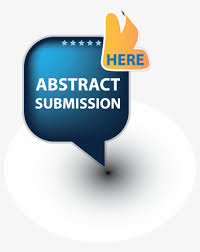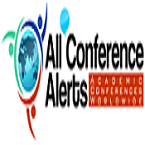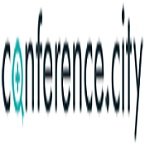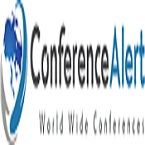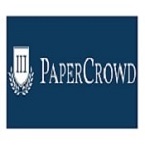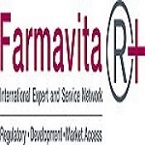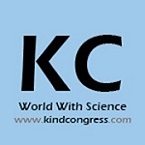Sessions and Tracks
Track 1: Digital Pharma
Some of the people believes that digital capabilities are not only critical to Pharmaceutical companies ability to improve the way they roll out new products, but to increasing the Pharmaceutical industry’s contribution to health care by enabling it to provide innovative services to improve patients’ outcomes. In order to increase the perceived value of Pharma within the health care system, the industry is striving to respond to the needs of all stakeholders:health care professionals, patients and payers. In the meantime, the culture of Pharmaceutical companies is shifting from one of separate departments working vertically to one that is cross functional.
Related Societies: European Biopharmaceutical Enterprises | The Danish Society for Biopharmaceutical Statistics | European Society for Biomaterials | Royal Pharmaceutical Society of Great Britain | Turkish Pharmacists Association.
Track 2: R&D Advancement: Road to New Medicines
Big pharmaceutical companies develop new business models to cope with the innovation crisis (patent loss, drying up of pipelines) and to improve their productivity in R&D and innovation. These pressures led big players to transform or reinvent their business models to sustain value creation from R&D and innovation. However, to our knowledge, there is still a lack of understanding regarding the “strategic alignment” of these organizational changes and on how they are perceived by organizational members.
Related Societies: European Biopharmaceutical Enterprises | The Danish Society for Biopharmaceutical Statistics | European Society for Biomaterials | Royal Pharmaceutical Society of Great Britain | Turkish Pharmacists Association.
Track 3: Clinical Pharmacy and Therapeutics
Drug absorption is set by the drug’s chemistry properties, formulation, and route of administration. Dosage forms (e.g. tablets, capsules, solutions), consisting of the drug and alternative ingredients, square measure developed to lean by numerous routes (e.g. oral, buccal, sublingual, rectal, parenteral, topical, inhalational). In spite of the route of administration, medicine should be in answer to be absorbed.
Related Societies: European Biopharmaceutical Enterprises | The Danish Society for Biopharmaceutical Statistics | European Society for Biomaterials | Royal Pharmaceutical Society of Great Britain | Turkish Pharmacists Association.
Track 4: Pharmaceutical sciences
The pharmaceutical sciences combine broad range of scientific disciplines that are critical to the discovery and development of new drugs and therapies. Pharmaceutical Sciences is a dynamic and interdisciplinary field that aims to integrate fundamental principles of physical and organic chemistry, engineering, biochemistry, and biology to understand how to optimize delivery of drugs to the body and translate this integrated understanding into new and improved therapies against human disease. At the many of institutes internationally recognized faculty contribute to the field through inquiry into the underlying mechanisms of drug interactions with the human body and development of advanced synthetic or biologically-derived materials that can modulate these interactions in pursuit of better and safer therapies and drug products.
Related Societies: European Biopharmaceutical Enterprises | The Danish Society for Biopharmaceutical Statistics | European Society for Biomaterials | Royal Pharmaceutical Society of Great Britain | Turkish Pharmacists Association.
Track 5: Pharmaceutical Nanotechnology
Pharmaceutical Nanotechnology deals with emerging new technologies for developing customized solutions for drug delivery systems. The drug delivery system positively impacts the rate of absorption, distribution, metabolism, and excretion of the drug or other related chemical substances in the body. In addition to this the drug delivery system also allows the drug to bind to its target receptor and influence that receptor’s signalling and activity. Pharmaceutical nanotechnology embraces applications of nanoscience to pharmacy as nanomaterials, and as devices like drug delivery, diagnostic, imaging and biosensor.
Related Societies: American College of Clinical Pharmacology | American Society for Clinical Pharmacology and Therapeutics | American Neurological Association (ANA) | American Society of Neuroimaging | American Board of Psychiatry and Neurology (ABPN) | American Academy of Neurology (AAN)
Track 6: Entrepreneurs Investment Meet
A platform aimed to connect Entrepreneurs, Proposers and the Investors worldwide. It's intended to create and facilitate the most optimized and viable meeting place for engaging people in global business discussions, evaluation and execution of promising business ideas. An investor could be able to find out the highest potential investment opportunities globally, which provide good return on investment.
Related Societies: American College of Clinical Pharmacology | American Society for Clinical Pharmacology and Therapeutics | American Neurological Association (ANA) | American Society of Neuroimaging | American Board of Psychiatry and Neurology (ABPN) | American Academy of Neurology (AAN)
Track 7: Globalized Pharma Sector
Globalized Pharma Sector is based on gaining information on changing structure of competition and increased competitiveness, lack of brand new products, despite increased investments into R&D (Research& Development) activities, increased importance of regulatory issues (registrations, intellectual propertyrights,litigations), fast consolidation and concentration of the world Pharmaceutical industry can be known as the Globalized Pharma Sector
Related Societies: The International Society for Pharmaceutical Engineering (ISPE), The European Federation of Pharmaceutical Industries and Associations (EFPIA), The European Generic Medicines Association (EGA), The European Personalised Medicine Association EPEMED, European Association of Employed Community Pharmacists in Europe (EPhEU), European Pharmaceutical Union (EPU), Pharmaceutical Group of the European Union (PGEU), Society for Clinical Trials, Association of Clinical Research, The Society of Clinical Research Associates, Clinical Research Society.
Track 8: Drug Discovery
In the fields of medicine, biotechnology and Pharmacology, drug discovery is the process by which new candidate medications are discovered. Modern drug discovery involves the identification of screening hits, medicinal chemistry and optimization of those hits to increase the affinity, selectivity (to reduce the potential of side effects), efficacy or potency, metabolic stability (to increase the half-life), and oral bioavailability.
Related Societies: Accreditation Council for Pharmacy Education | American Institute of the History of Pharmacy | American Society of Health-System Pharmacists | American Society of Consultant Pharmacists(ASCP)| European Medicines Agency | Federal Agency for Medicines and Health Products (FAGG) | Danish Health and Medicines Authority (SST) | Bulgarian Drug Agency (BDA) | Federal Institute for Drugs and Medical Devices (BfArM) | National Organization for Medicines (EOF)
Track 9: Drug Development
Drug development focusses on launch of new Pharmaceutical drug to the market once a lead compound has been identified through the process of drug discovery. It includes pre-clinical research on microorganisms and animals, filing for regulatory status, such as via the United States Food and Drug Administration for an investigational new drug to initiate clinical trials on humans, and may include the step of obtaining regulatory approval with a new drug application to market the drug.
Related Societies: The International Society for Pharmaceutical Engineering (ISPE), The European Federation of Pharmaceutical Industries and Associations (EFPIA), The European Generic Medicines Association (EGA), The European Personalised Medicine Association EPEMED.
Track 10: Pharmaceutical Engineering
Pharmaceutical engineering deals with Pharmaceutical Science and technology that involves development and manufacturing of products, processes, and components in the Pharmaceuticals industry (i.e. drugs & biologics). While developing Pharmaceutical products involves many interrelated disciplines (e.g. medicinal chemists, analytical chemists, clinicians/pharmacologists, pharmacists, chemical engineers, biomedical engineers, etc.), the specific subfield of "Pharmaceutical engineering" has only emerged recently as a distinct engineering discipline.
Related Societies: American Institute of Chemists | American Society for Mass Spectrometry | American Association for Clinical Chemistry | American Crystallographic Association | American Society for Biochemistry and Molecular Biology | Brazilian Chemical Association | European Association for Chemical and Molecular Sciences | European Association of Employed Community Pharmacists in Europe | European Pharmaceutical Union | Estonian Chemical Society
Track 11: Advances in Pharmaceutical Packaging
Packaging plays an important role in providing protection, presentation, convenience, identification information, and compliance of a product during storage, transportation, display and until the product is safely consumed. Packaging may be considered as a system by which the product safely reaches from producer to consumer. The track mainly focuses on recent advances in packaging technology and packaging material. Many types of symbols for package labelling should be nationally and internationally standardized. Packaging symbols represent product certifications, trademarks, proof of purchase .
Related Societies: European Federation of Pharmaceutical Industries and Associations (EFPIA) Pharmaceutical Society of Ireland, The International Society for Pharmaceutical Engineering (ISPE), The), The European Generic Medicines Association (EGA), The European Personalised Medicine Association EPEMED.
Track 12: Purpose and Principles of GMP
Good Manufacturing Practices quality of drugs is essentially the responsibility of manufacturers. GMP Guidelines are means to assure this very quality of drugs. CGMP refers to the Current Good Manufacturing Practice regulations enforced by the US Food and Drug Administration (FDA). CGMPs provide for systems that assure proper design, monitoring, and control of manufacturing processes and facilities. Adherence to the CGMP regulations assures the identity, strength, quality, and purity of drug products by requiring that manufacturers of medications adequately control manufacturing operations. GMP is actually good common sense quality management quality assurance GMP production and quality control.
Related Societies: American Coatings Association | Parenteral Drug Association (PDA) | American Association of Pharmaceutical Scientists (AAPS) | Consumer Healthcare Products Association | American Urological Association (AUA) | Pharmacy Society of Wisconsin (PSW) | Pharmaceutical Society of New Zealand Incorporated (PSNZI) | Royal Pharmaceutical Society (RPS) | Association of British Pharmaceutical Industry (ABPI)
Track 13: Pharmaceutical Supply Chain Optimization
Supply chain management (SCM) is the integration of key business processes across the supply chain for the purpose of creating value for customers and stakeholders. Indeed, supply chain management integrates supply and demand within and across companies in an efficient business model. The Council of Supply Chain Management Professionals defines supply chain management as planning and management of all activities involved in sourcing, procurement, conversion and all logistics activities. There are various aspects of optimizing in the supply chain; eliminating bottlenecks, balancing between lowest material cost and transportation, optimizing manufacturing flow, maintaining the right mix and location of factories and warehouses, vehicle routing analysis, dynamic programming and efficient use of capacities, inventories, and labours are of main aspects of supply chain optimization.
Related Societies: American Coatings Association | Parenteral Drug Association (PDA) | American Association of Pharmaceutical Scientists (AAPS) | Consumer Healthcare Products Association | American Urological Association (AUA) | Pharmacy Society of Wisconsin (PSW) | Pharmaceutical Society of New Zealand Incorporated (PSNZI) | Royal Pharmaceutical Society (RPS) | Association of British Pharmaceutical Industry (ABPI)
Track 14: Pharmaceutical Process Validation
Pharmaceutical Process Validation is the most important and recognized parameters of CGMPs. Quality cannot be adequately assured by in-process and finished inspections and testing but it should be built in to the manufacturing process. These processes should be controlled in order that the finished product meets all quality specifications. Validation is one of the important steps in achieving and maintaining the quality of the final product. The requirement of process validation appears of the quality system (QS) regulation. The goal of a quality system is to consistently produce products that are fit for their intended use.
Related Societies: American Statistical Association | Controlled Release Society | Society for Biomaterials | American Chemical Society | American Coatings Association | Parenteral Drug Association.
Track 15: Regulatory Requirements for Pharmaceuticals
The area unit variety of motives for extending the merchandise development outside of the mature, developed economies (e.g. the EU and therefore the US) and most of them have faith in the high population and market potential of rising markets. FDA guidance for clinical investigations and Pharmaceutical development goes a lot of and a lot of international within the direction of rising markets that tend to supply solutions for the patient achievement and overall development prices and timelines.
Related Societies: The European Federation of Pharmaceutical Industries and Associations (EFPIA), The European Generic Medicines Association (EGA), The European Personalised Medicine Association EPEMED, European Association of Employed Community Pharmacists in Europe (EPhEU), European Pharmaceutical Union (EPU), Pharmaceutical Group of the European Union (PGEU).
Track 16: Medico Marketing
Medico-Marketing focusses on exchange of drug information among drug manufacturing company and the recommending doctor, Nurse, Pharmacist or with the end user. The intention behind this data exchange is to describe the Pharmaceutical Company’s products and how it will benefit the patient community in diagnosis or management of the human ailments.
Related Societies: International Society for Computational Biology (ISCB) | American Medical Informatics Association | Bioinformatics.org | American association for the advancement of science | Boston Area Molecular Biology Computer Types (BAMBCT) | Great Lakes Bioinformatics Consortium(GLBC) | Midsouth Computational Biology And Bioinformatics Society (MCBIOS)
Track 17: Generics versus Big Pharma
Yet over the past decade in particular, most of the Big Pharma’s have adopted small molecule generics in one shape or form into their overall business model. And many of them openly talk about the “innovation headroom” that a healthy low-priced generics market enables i.e. the money saved on off-patent drugs can be used to fund high-priced new innovations. They have recognized that they cannot fight the realities of aging populations and healthcare economics.
Related Societies: American Society of Pharmacognosy (ASP) | Phytochemical Society of North America (PSNA) | The Herb Society of America | American Herbal Products Association (AHPA) | The Asian Society of Pharmacognosy (ASP) | Society of Pharmacognosy, Malaysian Natural Product Society (MNPS) | The Japanese Society of Pharmacognosy | Australian Society of Plant Scientists
Track 18: Pharma and Biotech Financial Outlook
The downturn in the global economy has forced Pharmaceutical and life sciences companies to focus on cost-saving initiatives, putting stress on finance departments. Although optimizing costs will always be important, reinvigorating R&D will most likely be a top strategic initiative for these companies as well. Most big Pharmaceutical companies are under competitive pressure from generic drug makers pressure that will become more intense as an increasing number of patents for “blockbuster” drugs expire during the next few years.
Related Societies: Pharmaceutical Society of Ireland, The International Society for Pharmaceutical Engineering (ISPE), The European Federation of Pharmaceutical Industries and Associations (EFPIA), The European Generic Medicines Association (EGA), The European Personalised Medicine Association EPEMED, European Association of Employed Community Pharmacists in Europe (EPhEU), European Pharmaceutical Union (EPU), Pharmaceutical Group of the European Union (PGEU).
Track 19: Pharmacy Education and Practice
Standards of initial education and training for pharmacists set out the criteria against which we will approve education and training for student pharmacists and pre-registration trainee pharmacists. The standards ensure that newly registered pharmacists are competent to practice safely and effectively. The mission of pharmacy education is to prepare graduates who provide patient centered care that ensures optimal medication therapy outcomes and provides a foundation for specialization in specific areas of pharmacy practice; to participate in the education of patients, other health care providers and future pharmacists, to conduct research and scholarly activity and to provide service and leadership to the community.
Related Societies: Pharmaceutical Society of Ireland, The International Society for Pharmaceutical Engineering (ISPE), The European Federation of Pharmaceutical Industries and Associations (EFPIA), The European Generic Medicines Association (EGA), The European Personalised Medicine Association EPEMED, European Association of Employed Community Pharmacists in Europe (EPhEU), European Pharmaceutical Union (EPU), Pharmaceutical Group of the European Union (PGEU).
Track 20: Clinical and Hospital Pharmacy
Clinical pharmacy is a health science discipline in which pharmacists provide patient care that optimizes medication therapy and promotes health, and disease prevention. The practice of clinical pharmacy conferences embraces the philosophy of pharmaceutical care, blending a caring orientation with specialized therapeutic knowledge, experience, and judgment to ensure optimal patient outcomes. As a discipline, clinical pharmacy also has an obligation to contribute to the generation of new knowledge that advances health and quality of life.
Hospital pharmacy is a specialization of this field that includes additional duties such as aiding doctors in applying drug therapy. The statements were developed by the profession to bring uniformity to the practice of hospital pharmacy.
Related Societies: Pharmaceutical Society of Ireland, The International Society for Pharmaceutical Engineering (ISPE), The European Federation of Pharmaceutical Industries and Associations (EFPIA), The European Generic Medicines Association (EGA), The European Personalised Medicine Association EPEMED, European Association of Employed Community Pharmacists in Europe (EPhEU), European Pharmaceutical Union (EPU), Pharmaceutical Group of the European Union (PGEU).
Track 21: Industrial and Physical Pharmacy
Industrial pharmacy is a discipline which includes manufacturing, development, marketing and distribution of drug products including quality assurance of these activities. The research topics are focused on solving current general problems in pharmaceutical industry conferences, such as formulation and characterization of sticky amorphous drugs, problem-solving for paediatric medicines and miniaturization of manufacturing processes.
Physical pharmacy conferences incorporate information of arithmetic, material science and science and apply them to the pharmaceutical dose frame improvement. Physical pharmacy gives the premise to understanding the synthetic and physical wonders that oversee the in vivo and in vitro activities of pharmaceutical items.
Related Societies: European Biopharmaceutical Enterprises | The Danish Society for Biopharmaceutical Statistics | European Society for Biomaterials | Royal Pharmaceutical Society of Great Britain | Turkish Pharmacists Association
Track 22: Drug Formulation
Drug formulation is the process of designing and producing the drugs that are eventually sold to patients as pharmaceuticals. In this phase of development, a variety of substances are combined with the drug's active ingredient. This chemical has the intended effect on the patient to form the finalized drug
Related Societies: European Biopharmaceutical Enterprises | The Danish Society for Biopharmaceutical Statistics | European Society for Biomaterials | Royal Pharmaceutical Society of Great Britain | Turkish Pharmacists Association.
Market Analysis
Market Research on Pharmaceutical Sciences
The Board of Pharmaceutical Sciences (BPS) of the International Pharmaceutical Federation (FIP) has developed a view on the future of pharmaceutical sciences in 2020. The global pharmaceutical market is projected to reach 10.27 billion USD by 2025. The market is expected to see a growth at 13.1% CAGR owing to increasing incidence of Adverse Drug Reaction. The key driver for the growth of the pharmaceutical market is ADR’s. In 2015, the U.S. FDA received almost 253,017 serious adverse events and 44,693 deaths associated with adverse drug reactions (ADRs). This shows the possible demand for instigating safety and pharma services. The statistic shows the projected growth of the world pharmaceutical market by the regional group between 2018 and 2022. It is expected that the pharmaceutical market will have a compound annual growth rate of 6 to 9 percent in this period.
This statistic describes the projected global pharmaceutical market growth for the period 2016-2021, measured by the compound annual growth rate (CAGR) and sorted by regional submarkets. It is expected that North America will grow at a CAGR of 4.3 percent.
The global market for natural & plant-derived drugs was valued at $23.2 billion in 2013 and $24.4 billion in 2014. This total market is expected to reach $35.4 billion in 2020, with a Compound Annual Growth Rate (CAGR) of 6.6% from 2015 to 2020.
Pharmaceuticals represented a US$300 bn-a-year market globally as of 2015, the World Health Organization states. The global pharmaceutical market is expected to surpass US$400 bn by 2018. Worldwide prescription drug sales forecasted to grow at a robust 6.5% (CAGR) through 2022 to reach $1.06trn. 32% of the 2022 increase in sales to come from orphan drugs (+$95bn).
Major Pharma Associations around the Globe:
-
Academy of Managed Care Pharmacy (AMCP), Alexandria, VA
-
American Association of Pakistani Pharmaceutical Scientists
-
British Columbia Pharmacy Association
-
California Pharmacists Association
-
Kansas Pharmacists Association
-
Ohio Pharmacists Association
-
Pharmacy Guild of Australia
-
European Association of Pharma Biotechnology
-
Pharmaceutical Group of the European Union
-
European Federation of Pharmaceutical Industries and Associations
-
European Biopharmaceutical Enterprises
-
European Federation of Pharmaceutical Industries and Associations
-
European Biotechnology
-
Farmaindustria
-
European Pharmaceutical Union (EPU)
-
Pharmaceutical Group of the European Union (PGEU)
-
European Association of Employed Community Pharmacists in Europe (EPhEU)
-
Danish Association of Pharmaconomists
-
Norwegian Pharmacy Association.
Drug Development Type Insights
The in-house segment dominated the market for pharmaceutical manufacturing and accounted for a revenue share of 50.1% in 2019. Most of the large-scale drug manufacturers opt for in-house production because it allows the companies to have control over the private information associated with novel molecules. Expansion of in-house pharmaceutical manufacturing facilities by key firms also drives the segment growth. For instance, in August 2020, Grand River Aseptic Manufacturing expanded its Michigan facilities.
In recent years, key drug manufacturers have shifted their focus towards external service providers for R&D and manufacturing services. The growth in the demand for customized products, the need for enhanced productivity and efficiency across the value chain, and continuous pressure from regulatory bodies on drug pricing have compelled the pharmaceutical companies to rely more on outsourcing mode of drug development.
Several benefits associated with outsourcing operations are expected to drive the segment at a lucrative pace in the market for pharmaceutical manufacturing. Outsourced services minimize the investments, reduce drug development and overall costs, and increase the efficiency of manufacturing procedures, and easily comply with different regulatory norms. Besides, the integration of Robotic Process Automation (RPA) by contract manufacturers efficiently accelerates the drug development processes.
In addition, the paradigm shift towards smart, integrated, and data-rich paperless operations has resulted in precise and error-free production. Such developments have allowed the companies to gather and utilize more data in minimal time and cost, which boosts the pharmaceutical manufacturing. Constant progress in the field of personalized medicines has opened up numerous possibilities to target different health maladies and allowed the development of patient-centric models. This progress results in a shift from large batches to smaller batches for the development of complex medicines and autologous patient-centric treatments. This has also encouraged the manufacturers to redesign their supply chain in order to better align with the patient-centric health care system.
A rise in the drug approvals by the regulatory bodies is expected to fuel the pharmaceutical manufacturing procedures. For instance, the FDA approved 59 drugs in 2018, 49 drugs in 2019, and 15 drugs up to April 2020. Furthermore, a large number of ongoing clinical trials have created numerous growth opportunities in the market for pharmaceutical manufacturing.
Formulation Insights
In terms of revenue, the tablets segment dominated the market for pharmaceutical manufacturing with a share of 25.4% in 2019. This is due to the wide availability of tablets in different colors, shapes, and sizes as well as types, such as film and enteric-coated, effervescent, and orally disintegrating tablets. The advent of 3D-printed tablets designed for personalized needs also boosts segment growth. For instance, in February 2020, Merck partnered with a German firm, AMCM, to conduct clinical testing on 3D printed tablets.
The injectable segment is anticipated to witness the fastest CAGR in the market for pharmaceutical manufacturing during the forecast period. The increase in the number of approvals for prefilled syringes and auto-injectors is attributive to an estimated growth rate. Moreover, a shift in preferences towards larger dosage volumes has resulted in an increased demand for 2.25-mL needle syringes, which significantly contributes to the revenue generation in this segment.
Subcutaneous injections have gained immense popularity in recent years among drug developers, device manufactures, and patients. Benefits associated with these injections are self-administration, ease of use, reliability, precision, use of fixed doses in prefilled syringes, compact design, compliance, and high patient comfort. The advent of subcutaneous injections is expected to further propel the growth of the injectable segment in the market for pharmaceutical manufacturing.
Route of Administration Insights
The oral segment was valued USD 187.91 billion in 2019. Oral dosage forms are affordable, easy to manufacture, and patient-friendly. In addition, the advancements in drug delivery technologies, such as sustained release dosage formulations and targeted drug delivery, has allowed the orally administered drugs to achieve greater levels of availability in the marketplace.
A significant rise in the implementation of automated systems and barrier systems, including restricted access barrier systems, and isolators, in parenteral manufacturing, boosts the parenteral segment at the fastest CAGR throughout the forecast period. In addition, an introduction of a broad range of packaging styles, such as ready-to-fill syringes, cartridges, and vials, has hugely transformed the parenteral manufacturing sector.
The rise in demand for innovative drug-delivery systems that better fit with the ‘mobile lifestyle’ of patients’ paves a path for the high adoption of pens and auto injectors, which further surges the segment growth. Apart from this, an increase in the outsourcing of fill-finish manufacturing services by the drug developers also boosts the revenue generation in the parenteral segment in the market for pharmaceutical manufacturing.
Therapy Area Insights
The other diseases segment dominated the market for pharmaceutical manufacturing and accounted for a revenue share of 60.1% in 2019. The cancer segment accounted for the second-largest revenue share of 10.2% in 2019 owing to the high sales of oncology drugs, especially KEYTRUDA of Merck and HUMIRA of AbbVie, Inc., in the market space. Several studies have reported that healthcare spending on cancer treatments has doubled in the last few years. Besides, a huge number of clinical tests in immuno-oncology globally are also attributive to the largest share of the cancer segment.
An increase in the incidence rate of diabetes globally and a rise in the number of marketed branded anti-diabetic therapies create numerous growth opportunities for the diabetes segment. According to the estimates of the International Diabetes Federation, there were around 463.0 million adults with diabetes in 2019 and it is expected to rise to 700.0 million cases in 2045. This high incidence rate drives the pharmaceutical development for diabetes at the fastest CAGR of 12.91%.
Numerous drug approvals and launches by pharmaceutical manufacturers significantly accelerate the revenue generation in the diabetes segment. For instance, in February 2020, Sun Pharmaceutical Industries Ltd. launched its Riomet ER, a liquid formulation, designed for the treatment of type 2 diabetes mellitus in the U.S. Similarly, in April 2020, Novo Nordisk A/S received approval for its oral diabetes drug Rybelsus from the European Commission in Europe.
Distribution Channels Insights
The retail segment accounted for the largest revenue share of 78.2% in 2019 in the market for pharmaceutical manufacturing. As the medical cost and health insurance have risen, more people have shifted their preferences towards self-medication for the treatment of minor health issues. Moreover, OTC medicines have gained popularity as an easy and cost-effective option. These factors result in the high adoption rate of drugs from retail stores, which leads to a larger share of this segment.
In recent years, specialty pharmacy has gained significant traction resulting in the wide availability of specialty drugs at retail pharmacies, which also drive the segment growth. Besides, retail pharmacies undergo partnerships and collaboration models with health professionals and healthcare facilities in order to improve clinical outcomes and remain competitive with other businesses in the market for pharmaceutical manufacturing.

